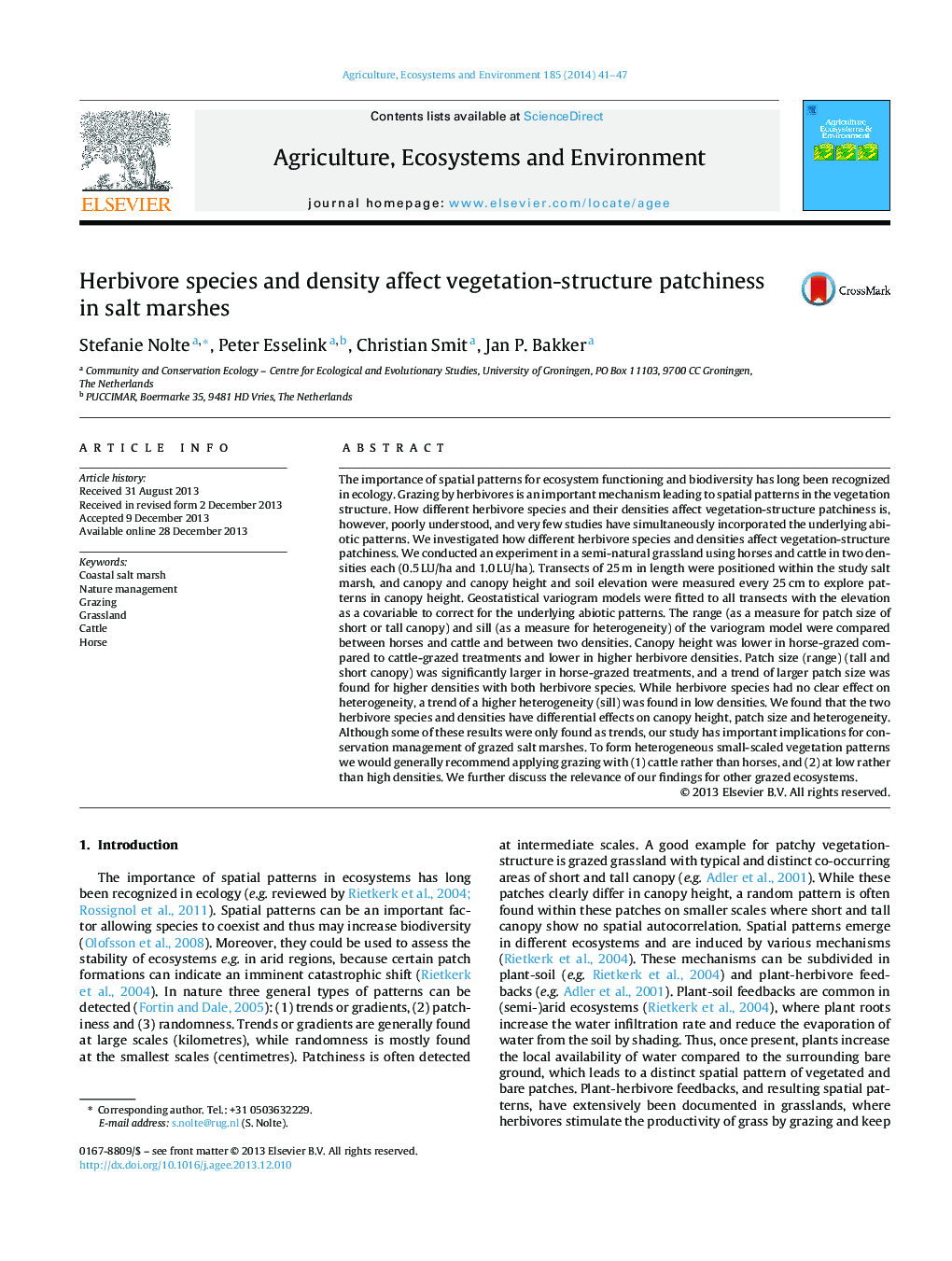| کد مقاله | کد نشریه | سال انتشار | مقاله انگلیسی | نسخه تمام متن |
|---|---|---|---|---|
| 2414066 | 1552067 | 2014 | 7 صفحه PDF | دانلود رایگان |
• Grazing by herbivores creates spatial patterns in vegetation.
• Herbivore species and densities affect vegetation structure differently.
• Horses and high densities create a shorter canopy than cattle and low densities.
• Horses create larger patches than cattle.
• Grazing management can be an important tool for conservation of grazed salt marshes.
The importance of spatial patterns for ecosystem functioning and biodiversity has long been recognized in ecology. Grazing by herbivores is an important mechanism leading to spatial patterns in the vegetation structure. How different herbivore species and their densities affect vegetation-structure patchiness is, however, poorly understood, and very few studies have simultaneously incorporated the underlying abiotic patterns. We investigated how different herbivore species and densities affect vegetation-structure patchiness. We conducted an experiment in a semi-natural grassland using horses and cattle in two densities each (0.5 LU/ha and 1.0 LU/ha). Transects of 25 m in length were positioned within the study salt marsh, and canopy and canopy height and soil elevation were measured every 25 cm to explore patterns in canopy height. Geostatistical variogram models were fitted to all transects with the elevation as a covariable to correct for the underlying abiotic patterns. The range (as a measure for patch size of short or tall canopy) and sill (as a measure for heterogeneity) of the variogram model were compared between horses and cattle and between two densities. Canopy height was lower in horse-grazed compared to cattle-grazed treatments and lower in higher herbivore densities. Patch size (range) (tall and short canopy) was significantly larger in horse-grazed treatments, and a trend of larger patch size was found for higher densities with both herbivore species. While herbivore species had no clear effect on heterogeneity, a trend of a higher heterogeneity (sill) was found in low densities. We found that the two herbivore species and densities have differential effects on canopy height, patch size and heterogeneity. Although some of these results were only found as trends, our study has important implications for conservation management of grazed salt marshes. To form heterogeneous small-scaled vegetation patterns we would generally recommend applying grazing with (1) cattle rather than horses, and (2) at low rather than high densities. We further discuss the relevance of our findings for other grazed ecosystems.
Journal: Agriculture, Ecosystems & Environment - Volume 185, 1 March 2014, Pages 41–47
